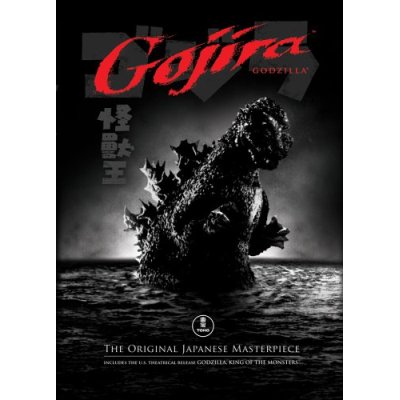
Most of us in the USA are familiar with Godzilla, the monster movie from 1954 in which Raymond Burr witnesses the destruction of Tokyo by a massive sea monster. That movie, compared to other Godzilla movies, has a darker edge to it and has long been a guilty pleasure of mine. Even though I know it was a chopped-up version of the original Japanese film, I like it.
Enter Gojira, the original Japanese film, now available on DVD. It was one of three smash hits for Toho in 1954, along with Musashi Miyamoto and The Seven Samurai. Like the other two, Gojira was no lightweight in the script department. I’ve just finished watching it and I’m stunned at how powerful an anti-nuclear weapons film it was. Much of the anti-nuclear message was cropped from the USA release. In this one, we see casualty wards, crying children, and shrouds pulled over those that did not make it. Doctors watch helplessly as they see Geiger counters go off the scale when they check survivors for radiation.
The makers of Gojira wanted to produce a strong antiwar movie. They had survived the firebombings of World War Two and some had also witnessed firsthand the destruction of Hiroshima and Nagasaki. In their Gojira, Tokyo is destroyed by fire for the second time in ten years and we have chances to bond with the people of Tokyo, only to see the monster Gojira make them casualties of his wrath. The destruction of Tokyo is not mindless: it is purposeful, and terrible.
As I watched Gojira, I considered it to be the first anime film. Parts of it are animated and the premise certainly fits with the mature tradition of Japanese animated arts. If one suspends disbelief around the actor in the monster suit – which isn’t campy in this version – one sees the potential for what could have been an epic anime feature. Given today’s technology, Gojira could be redone with satisfyingly realistic special effects. But in the hands of a Hollywood team, the deeper themes of the film would be lost.
At its heart, Gojira is a true protest film. The monster Gojira himself is something out of the Shinto world, a force of nature turning on a humanity that forgot its own bond with the world. In Gojira, I saw the beginnings of some of Hiyao Miyazaki’s work, especially his films Nausicaä of the Valley of Wind and Mononoke Hime (Princess Mononoke). Parts of the film also came uncomfortably close to Grave of the Fireflies, the anime that deals with the firebombing of Tokyo in May, 1945. The film is not light entertainment. It is heart-wrenching and makes one ponder about man’s inability to turn away from violence.
Gojira is not a metaphor for nuclear destruction – he is nuclear destruction. The prophecy at the end of the film that continued testing would create a new Gojira has come to pass. In the 56 years since the film’s release, we have seen new Gojiras arise in the form of unstable nations with nuclear powers, such as North Korea and Pakistan, as well as in the spectre of a possible terrorist-spawned nuclear attack. Like the victims in Gojira, we stand helplessly, unable to truly halt a calamity, should it visit us. Perhaps we should be more humble in our ways, lest nature take on an aspect of terror and provide us with a nightmare designed to destroy the proud.


